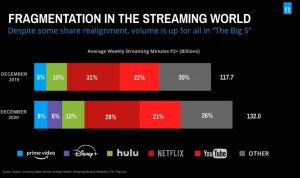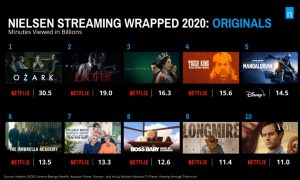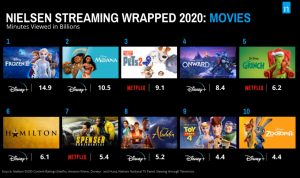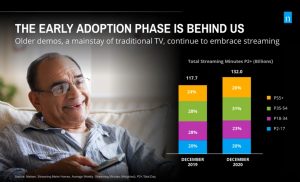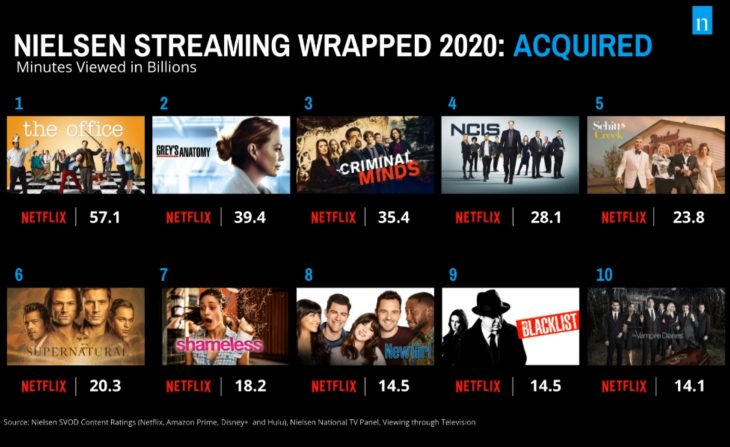
By John Bugailiskis
THE STREAMING WORLD is beginning to show the same fragmentation cycle that cable TV experienced, according to Brian Fuhrer, Nielsen’s senior vice-president of product strategy and thought leadership.
Fuhrer summed up the past year in streaming during a presentation at this year’s virtual CES 2021. While Netflix continues to dominate the original content category, new entrant Disney+, not surprisingly, now dominates in the movies category.
“Netflix was regularly 50% of all streaming, but over time their share has continued to decline [now at 28% from 31% in 2019] but their total minutes streamed continues to increase. So their business is just as healthy, it’s just a smaller part of bigger pie,” explained Fuhrer.
However, the study also reveals in the area of content ownership, Netflix is also slipping somewhat. In Nielsen’s Top 10 list of original programming Netflix did take first place with Ozark (30.5 billion minutes) and nine of its 10 shows made the list, but from that it only outright owns Ozark and Tiger King.
Even worse, it’s most-watched acquired show overall, The Office, is now streaming exclusively on NBCU’s Peacock in the States. The Office (which went off the air eight years ago and still streams on Netflix in Canada) actually captured the number one spot for acquired shows, streaming an astonishing 57 billion total minutes, or the equivalent of 108,000 years of total viewing in 2020.
In the Movies category, Disney+ dominated, taking seven out of the top ten spots, with Frozen II tops with 14.9 billion minutes viewed. This category is particularly strong for Disney because its films are watched multiple times by families and their children.
It’s worth noting Nielsen’s survey only measures households in the U.S. and counts only programs watched on a TV set. It doesn’t measure shows streamed to a phone, tablet or computer. The report also only reports numbers from Netflix, Disney+, YouTube, Hulu and Amazon. It does not include Apple TV+, HBO Max or Peacock.
One trend that surprised Fuhrer during the stay-at-home period of the pandemic was how an older demographic (35+), not only increased their viewing of streamed content, but maintained their usage as pandemic time passed.
“When things started to moderate and the people that streamed before slowed down, it went back to pre-Covid streaming levels. But the older demographics, they kept right on streaming. The implication is a lot more people put the plumbing in to stream by connecting internet to their TV.
“The reason that is important is because once you can do it, you can start sampling different alternatives and understanding what the options are. And that is what we think is going to be a pivot point in a lot of the media consumption and is really going to change things ongoing and have a market impact,” explained Fuhrer.
Fuhrer also noted that YouTube continues to do very strongly, second only to Netflix, with 21% of the overall streaming minutes. See charts below.
